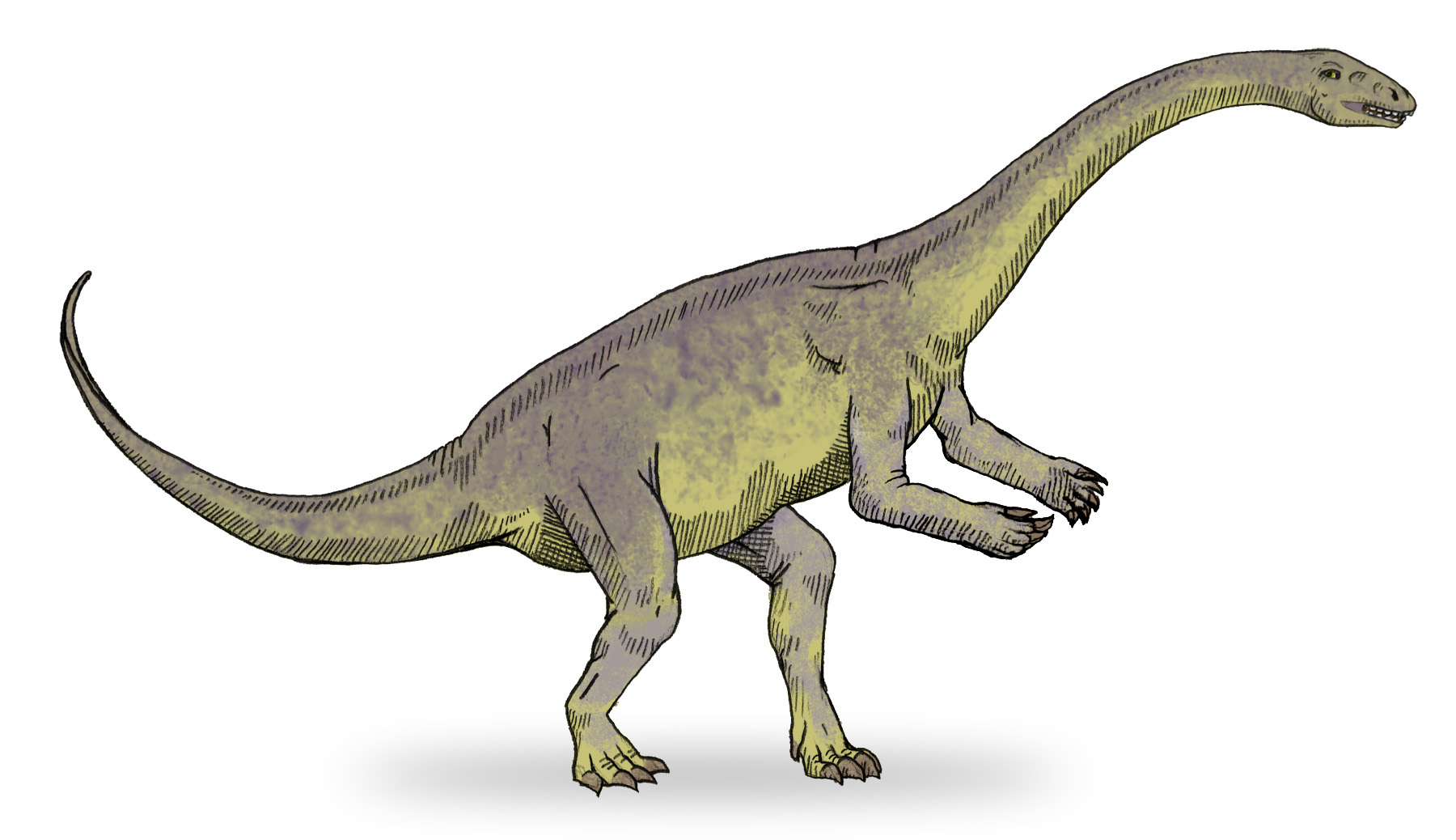- Lufengosaurus
Taxobox
name = "Lufengosaurus"

fossil_range =Early Jurassic
regnum =Animal ia
phylum = Chordata
classis = Sauropsida
superordo =Dinosaur ia
ordo =Saurischia
subordo =Sauropodomorpha
infraordo =Prosauropoda
familia =Massospondylidae
genus = "Lufengosaurus"
genus_authority = Young, 1941
subdivision_ranks =Species
subdivision =
*"L. huenei" Young, 1941(type)
*"L. magnus" Young, 1947 "Lufengosaurus", ( _zh. 祿豐龍 or 禄丰龙, meaning "Lufeng Lizard"), was aprosauropod dinosaur which lived during the EarlyJurassic period in what is now southwesternChina . At about 6metre s (20 ft) long, it was the first complete dinosaur skeleton mounted in China; a commemorative postage stamp was issued in 1958 to celebrate the event.Discovery and species
Named by C.C. Young in 1941, remains of the type species, "L. huenei", were found in the
Lower Lufeng Formation (Lower Jurassic) ofYunnan Province in China. A second species was named by Young a few years later. "L. magnus" was, as its name suggests, a significantly (up to 1/3rd) larger creature than "L. huenei".Classification
In 1981, Cooper [Cooper M.The prosauropod dinosaur "Massospondylus carinatus" Owen from Zimbabwe: its biology, mode of life and phylogenetic significance. Occasional Papers Of The National Museums and Monuments of Rhodesia Series B Natural Sciences 6(10); 689-840 (1981)] suggested "Lufengosaurus" and "
Yunnanosaurus " were species of the South African genus "Massospondylus ". However, a recent reanalysis [Barrett PM, Upchurch P, Xiao-lin W. Cranial osteology of "Lufengosaurus huenei" Young (Dinosauria: Prosauropoda) from the Lower Jurassic of Yunnan, People’s Republic of China. Journal of Vertebrate Paleontology, 2005, 25(4):806-822 ] of the skull of "Lufengosaurus huenei" establishes it as a distinct genus separate from either "Massospondylus" or "Yunnanosaurus".Palaeobiology
Like all prosauropods, "Lufengosaurus" had much longer hindlimbs than forelimbs and was probably bipedal some of the time, especially when browsing for food. It was herbivorous, although it had sharp claws (with an especially large thumb claw) and teeth. These features have been used to support claims that "Lufengosaurus" may have been at least partially omnivorous, but the sharp teeth witnessed in "Lufengosaurus" and other prosauropods are similar to those seen in
iguana ianlizard s - which are herbivorous. Barrett, P.M. (2000). Chapter 3: Prosauropod dinosaurs and iguanas: speculations on the diets of extinct reptiles. IN: "Evolution of Herbivory in Terrestrial Vertebrates" ISBN 0-521-59449-9] Alternatively, the claws may have been used for defense or raking foliage from trees.Trivia
* "Lufengosaurus" was the first dinosaur skeleton mounted in China. When the exhibit finally opened, a stamp was issued with an image of "Lufengosaurus" on it."Lufengosaurus." In: Dodson, Peter & Britt, Brooks & Carpenter, Kenneth & Forster, Catherine A. & Gillette, David D. & Norell, Mark A. & Olshevsky, George & Parrish, J. Michael & Weishampel, David B. "The Age of Dinosaurs". Publications International, LTD. p. 38. ISBN 0-7853-0443-6.]
References
*
*External links
* [http://www.dinosaur.net.cn/_DinoStamps/stamp_a9.htm Dinosaurian stamps]
* [http://www.geo.uw.edu.pl/HOBBY/STAMP/ANIMAL/lufeng.htm Prehistoric animals]
Wikimedia Foundation. 2010.
